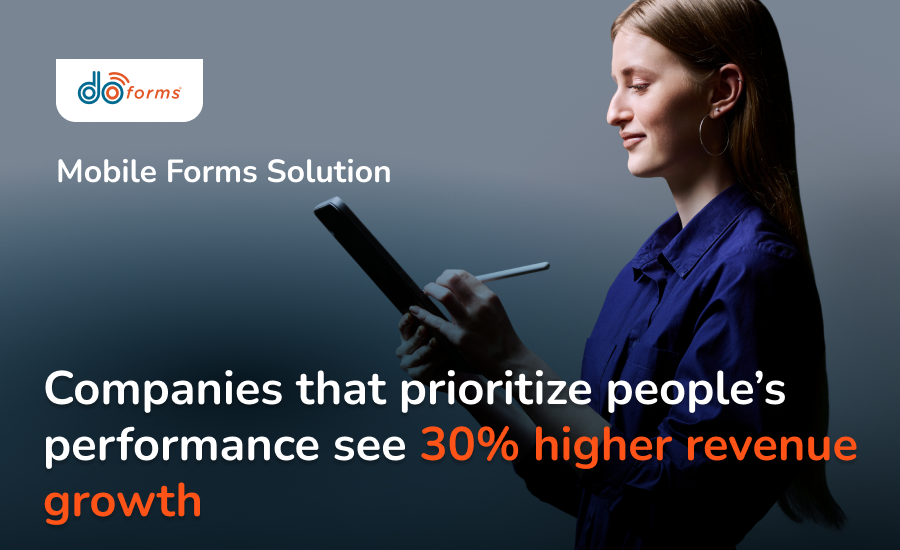
Employee Evaluation Form: Key Takeaways
- Employee performance evaluation forms help track performance, identify skill gaps and make decisions on promotions and salary raises
- You can use various evaluation formats that fit your organization, including numerical ratings, self-assessments, 360-degree feedback and role-specific forms
- When creating an evaluation form, include employee and reviewer details, job-specific performance criteria, training suggestions and space for comments and digital signatures
- Keep forms short, define clear evaluation metrics, use digital data collection tools and test the process with pilot groups
Imagine this: Your top-performing team leader is up for promotion, but when you open the evaluation file, all you see is vague comments and incomplete scores. Without concrete insights, you’re stuck — and so is their career path.
Managing employee performance is time-consuming, but focusing on people pays off. Research shows organizations that prioritize employee performance achieve up to 30 percent higher revenue growth than their competitors.
In this guide, we’ll share:
- The most important uses of employee evaluation forms
- Types of evaluation formats you can choose from
- What to include in a well-structured review
- Best practices to create an efficient evaluation form
Digitize your evaluation process.
Try doForms For Free!
Uses Of An Employee Performance Evaluation Form
With the right form, you can do more than just track performance. You can catch skill gaps, make fair promotion calls and even protect your company in legal disputes.
Track Performance
Evaluation forms give you a snapshot of how an employee’s been doing their job this month or quarter as well as over longer periods.
Identify Training Needs
By analyzing low scores and manager comments, you can spot skills gaps and performance issues early. This helps you organize and provide targeted coaching or programs that boost productivity.
For example, if multiple field technicians show low safety-compliance scores, evaluations can highlight areas where you need to secure more training.
Plan Promotions
Evaluation forms give HR and leadership evidence of performance and potential, helping to identify future leaders.
Support Decisions On Salary Raises
When it’s time to talk raises, having real data and feedback on hand can help you make an informed decision without guesswork and emotion.
Provide Legal Protection
Performance evaluation forms can also serve as legal documentation in case of disputes, wrongful termination claims or audits.

Using evaluation forms can help you manage your team better
Types Of Employee Evaluation Forms
Due to the unique workflows and roles in each company, businesses use different evaluation tools to assess their employees. The most common ones include:
Numerical Rating Form
A typical rating form might score employees from one to five, where one typically signals a need for improvement and five means their performance is excellent.
Narrative Review
In this system, managers provide written summaries of an employee’s strengths, areas for improvement and examples of work. These are helpful for roles where it’s difficult to use quantitative data collection forms.
Self-Evaluation Form
Employees assess their own performance against the same criteria their managers use. This encourages self-awareness and highlights gaps in perception.
360-Degree Feedback Form
With a 360-degree evaluation you capture insights from teammates, managers and even clients, giving you the full picture a single review could never provide.
Behavioral Checklist
Behavioral checklists make it easy to track habits like showing up on time or following safety protocols. You can use a simple yes/no or a frequency scale like always/sometimes/never.
Custom Role-Based Forms
These evaluation forms are tailored to match the competencies required for specific job titles or departments like customer service, field technicians and warehouse supervisors.

Evaluation forms come in many formats, each designed to fit different workplace needs
What To Include In An Employee Evaluation Form
No matter the purpose, a strong employee evaluation template always includes the following elements:
- Employee details: Include name, department and job role.
- Evaluator details: Add supervisor name, title and evaluation date.
- Review period: Specify the start and end dates of the performance cycle for which the employee is being evaluated—for example, “January 1 – June 30, 2025.”
- Evaluation criteria: Align those with the employee’s job function. For example, customer service, compliance adherence or technical accuracy.
- Quantitative or qualitative fields: Choose rating scales or open-ended responses.
- Goal tracking: Review previously set goals and space for new objectives.
- Skill & behavior analysis: Measure qualities such as punctuality or safety compliance using binary or frequency-based options.
- Training suggestions: Recommend courses, workshops or mentoring to address skills gaps and support development.
- Employee & manager comments: Include both points of view to clarify expectations and explain unique situations.
- Acknowledgment section: Confirm you agree with what’s on the form by placing digital or physical signatures.
Employee Review Form vs. Performance Evaluation: Key Differences
While many people use the two terms interchangeably, they serve different purposes and happen at different intervals.
Employee reviews are typically held monthly or quarterly. They focus on short-term goals, daily performance, or specific projects. They’re great for ongoing coaching and feedback.
Performance evaluations are structured assessments conducted once or twice a year. They evaluate long-term progress and the employee’s overall contributions. They are often tied to salary adjustments and promotions.
Using both helps you stay on top of daily performance while making smart long-term decisions.
Best Practices For Creating Efficient Performance Evaluation Forms
Creating a performance evaluation form doesn’t end with the fields you decide to include. You must ensure a fair and easy-to-manage process, and the following best practices will help you achieve that.
Use Clear Criteria
Avoid vague or generic performance metrics that don’t reflect the employee’s actual work. Make sure to align evaluation categories with job responsibilities.
Keep It Short
Focus on the most relevant performance areas. You don’t want to overwhelm reviewers and employees or lose key insights in long forms.
Define Your Rating Scale
Choose whether you’ll be using numbers or descriptive sections. Whatever scale you opt for, (stars, numbers, color codes), it should be something everyone from HR to frontline managers can interpret the same way.
Use Digital Tools
To speed up the evaluation process and reduce the risk of mistakes or lost/misplaced paper forms, consider using digital evaluation tools. Think mobile forms, performance management software or automated survey tools.
Test & Improve
Roll out the form with a pilot group so you can analyze feedback and adjust it before deploying to the entire company.
Create Employee Evaluation Forms with doForms
Tired of managing performance evaluations on paper or spreadsheets, chasing down forms, dealing with inconsistent formats and struggling to organize feedback across departments?
With doForms, you can streamline the entire evaluation process with ease.
Used across various sectors, our mobile forms solution allows you to:
- Build custom evaluation templates by department, role and region.
- Pre-populate employee info to save time and reduce errors.
- Collect performance data in real time, a reliable data collection method for field and office environments.
- Automate alerts so you never miss an evaluation deadline.
- Use dropdowns and scoring logic to make fast and consistent ratings.
- Attach digital signatures.
- Sync and save all submissions automatically, linking performance data directly to employee records or your HR system.
- Store forms securely in the cloud and retrieve them for comparisons and audits.
- Analyze performance trends across teams and departments.
Wasting hours on manual performance tracking?
Save valuable time with doForms
Employee Evaluation Forms: FAQs
What’s the purpose of an employee evaluation form?
The purpose of an employee evaluation form is to document and assess job performance, guide improvement and support compensation and promotion decisions.
How often should I do evaluations?
There’s no single answer. Some companies evaluate their employees quarterly, while others stick to annual reviews. If you’re unsure, start with twice a year and adjust based on team feedback.
Should employees fill out the form too?
Yes! Self-evaluations can provide insights into your team members’ perspectives and encourage engagement.
Can I use doForms to automate this process?
Absolutely. doForms helps you create, distribute and manage evaluation forms digitally from any device, whether a tablet, laptop or smartphone.
Can employees dispute their evaluation results?
Yes. A good evaluation practice is to have space for employee comments and a follow-up discussion to address concerns, clarify misunderstandings or revise ratings.
What’s the difference between goals and performance categories?
Performance categories measure key job behaviors like communication and teamwork. Goals are specific, time-bound targets set to complete a project or develop certain skills.
How long should my evaluation form be?
Keep it to two pages max, so you stay on top of every evaluation deadline.
Can I customize evaluation forms for different job roles?
Absolutely. A sales rep and a warehouse lead need different performance evaluation forms. With doForms, you can create role-specific templates for different departments and responsibilities.
How does digitizing employee performance evaluation forms help HR teams?
Digital forms streamline the review process, reduce errors, eliminate paperwork and reduce costs. Plus, you can store everything in one secure system, making it easier to manage employee data and run reports.
Still wrestling with spreadsheets and lost forms?
Book A Demo




